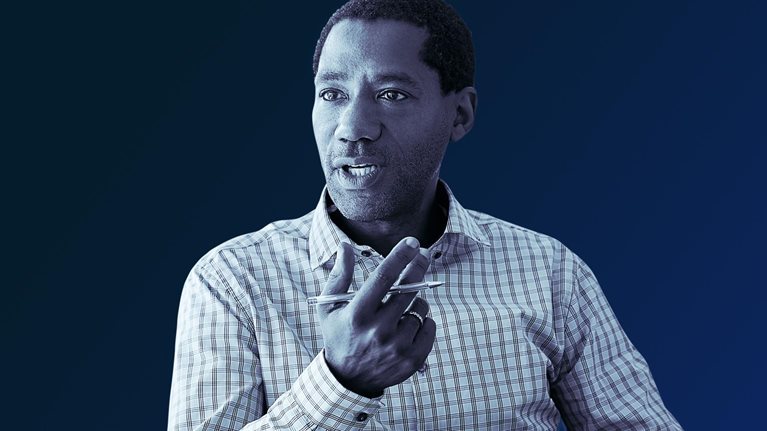In this edition of Author Talks, McKinsey Global Publishing’s Raju Narisetti chats with Fred Dust, former senior partner and global managing director at the design-thinking firm IDEO. In his latest book, Making Conversation (HarperCollins, 2020), the leading voice and practitioner of human-centered design and networked innovation outlines the elements essential for successful exchanges. An edited version of the interview follows.
What problem are you trying to solve with this book?

The global, local, corporate, and familial inability to successfully navigate hard conversations. I thought, by the way, I’d find answers in the spectacular or far flung—Japanese tea ceremonies or pilgrimages—but in the end many of the most remarkable and transformational anecdotes come from seemingly mundane circumstances. Sometimes it’s as simple as taking a deep breath before talking to an angry neighbor or noticing the change that occurs immediately after talking about a movie you’ve seen with friends.
What surprised you most about writing this book—the research, writing, or early response?
My first and biggest surprise was that when I sold the book to HarperCollins, my editor took me to a fancy lunch to celebrate, and as we’re sitting over sushi she said, “Oh, by the way, the book has to be relentlessly hopeful and optimistic about conversations.” Up until then, it had been, really, a book about how we got bad at them. That requirement added about a year to my writing.
Conversations in the next normal
In a year when everything went virtual, your book also offers practical lessons on designing conversations to drive impact. Talk about how to achieve that when we all have conference-call fatigue, and the personal connections that can happen in face-to-face events are absent.
I’ve been running virtual conversations, convenings, and serious strategy discussions since March 1, and they’ve been, on the whole, human, humane, joyful—even fun. But one of the first things I’d recommend is throwing out the old rule book you might have and rewriting the rules of conversations. They do not have to happen via Zoom; it can be a one-on-one phone call, working together on a Google doc. Think of conversations as asynchronous; break up a 90-minute call into three 30-minute calls over three days.
Maybe most important, design in the things that get designed out through technology—mostly the human. Ditch the backdrop in favor of real life—I’ve had CEOs telling me they finally see their people and, likewise, their employees saying that their boss feels more human. Add in a surprise, a bit of suspense; ask people to tell a short story about who they were at 12. Just a little bit of human can take us a long way.
Ditch the backdrop in favor of real life.... Add in a surprise, a bit of suspense; ask people to tell a short story about who they were at 12. Just a little bit of human can take us a long way.
There is no C-Suite playbook for having hard conversations, which were never easy inside organizations even in a nonvirtual world. What are some useful lessons from this book about having those conversations in this increasingly virtual world that businesses are operating in?
In that case, it’s good that I just told you to throw rules away. You know, there isn’t a manual, but there are a lot of implicit rules and that, frankly, is more damaging than if there was a playbook.
Maybe one of the most basic ideas in the book is to set and reset the rules of conversation. By doing so, you shift to rule sets appropriate for the work to be done. For instance, the rules for brainstorming are not the rules for critiquing, and you need rules for both of them. So many people hate brainstorming, for instance, but if you look back at the original rules of brainstorming, written in the 1940s, they’re shorter—only four—they’re better explained, and they’re explicit that there will be a time for critique after the brainstorming hour is over. A lot more people would buy into brainstorms if the rules were that clear and good.
In truth, as I’ve been lecturing and doing interviews, I’ve found that the approach I outline in the book is as relevant—even more so—in a virtual-conversation space.
The art of bridging individual experiences
As we look ahead to a new administration in America, there is a lot of talk about a new president needing to build bridges and unite a fairly divided and polarized country. What in your book can help with doing that at scale, and how—beyond televised appeals?
Healing and mourning go hand in hand, and we have a lot of mourning to do in this country and in the world. Part of this book came out of attending one of Joe Biden’s briefing sessions post–Sandy Hook.1 Say what you will about those briefings, the hearings were the last time our government forced us to hold a prolonged space—weeks, even months—for mourning on this topic. In that gap, we’ve had to do it through tears and protests; we need that kind of help again.
Read an excerpt from Fred Dust’s Making Conversation.



